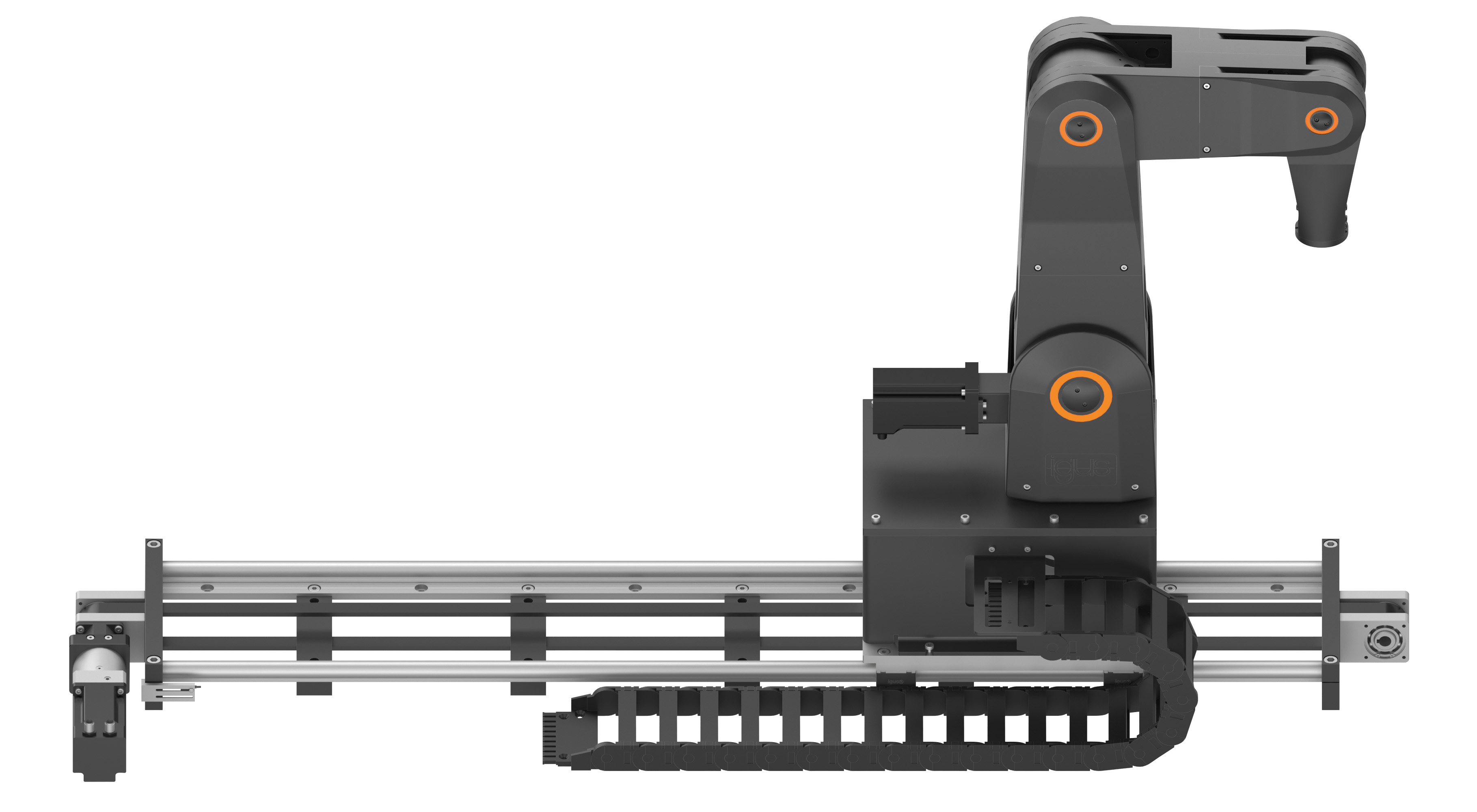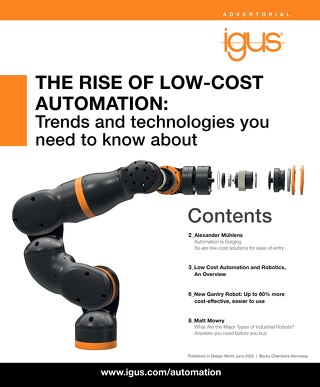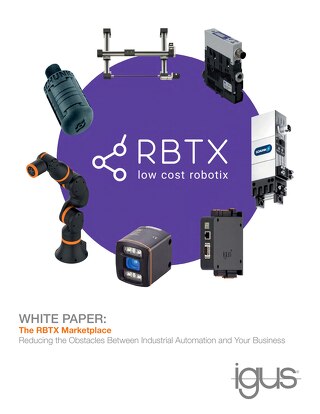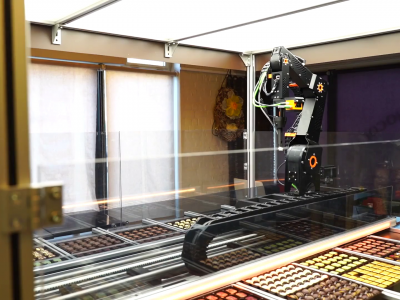What Is a 7th Axis for Robots?
One limiting factor of a four, five or six-axis robot is that it is stationary and typically bolted to the floor in a fixed position to work within a predefined workspace. However, adding a 7th axis changes that.
A 7th axis is a linear transfer system for moving robots along another linear (or 7th) axis. Sometimes referred to as “robot transfer units” or “linear transfer units,” these systems enable robots to move the length of a linear guide to other workstations and cells to perform other tasks. While sounding very complicated, this is actually a simple concept, as shown in the photo below.

Pictured: igus® drylin® 7th axis ZLW-linear belt actuator with a robolink® robotic arm
In this blog post, we’ll cover the benefits of a 7th axis, applicable applications and discuss a self-lubricating linear actuator that makes it easier to implement and maintain a 7th axis. Let’s get into it.
Benefits of a 7th Axis
One main benefit of adding a 7th axis to a robot is that the unit can be easily transferred to another work cell, replacing the need for additional robots. This also enables the robot to be positioned outside of a work area for human safety requirements.
Another advantage of adding such an axis is that it gives a smaller robot the possibility to perform the duties of a robot with a larger arm/reach.
These benefits offer a cost savings to the end user and promote a more rapid return on investment.
Application Examples
Applications like painting, coating, welding, palletizing, pick-and-place, conveying, and warehousing/logistics facilities are just some examples of where a 7th axis would work well. That’s because these robots are usually able to perform duties that are repetitive and even dangerous for humans.
7th axis systems can be mounted both horizontally and vertically depending on the requirements. They can also be elevated to add safety as well as open floor space in the warehouse or factory where they are employed.
Smaller 7th axis systems can even be mounted on an AGV (automated guided vehicle) for even further flexibility. This allows more room for other processes or storage below, increasing the workflow of an operation and overall productivity.
Linear Actuators for a 7th Axis
There are several types of linear systems that can actuate a 7th axis. One of the most common systems for moving smaller robots, like Universal Robots, are linear actuators that rely on timing belt-driven linear bearings.
Products like igus’® drylin® 7th axis are based on self-lubricating polymer sliding bearings, which makes them ideal for working in dirty environments and eliminates the need for oil or grease-based lubrication. Since there is no wet lubrication in the system, this also enables them to be used in sensitive clean environments, depending on the requirements.
Another benefit of plain bearing 7th axis systems is that they often utilize aluminum guide rails, making them significantly lighter than linear ball bearing systems.
For larger robots with highly cantilevered loads, it is recommended to use linear ball bearings; although, the price of these can be significantly greater than plain bearing systems. Plus, in applications where there is the potential for dirt/dust/metal shavings, care must be taken to avoid this debris from entering the bearings.
NEMA-framed stepper motors are often used to power the 7th axis systems and can even be found with the control systems that allow them to be fully integrated into the robot controls themselves.
We’ve Made It Easy
This all may sound very complicated but there are some companies, like igus®, that have integrated their hardware and controls elements for easy and quick assembly. The mounting plates are pre-drilled for many UR and EPSON robots, and our 7th axis has a simple, easy-to-install UR cap and USB stick, enabling programming in 1-2 minutes. To see how easy it is to assemble the igus® 7th axis into the UR controls, check out the video below.
Visit our webpage to learn more about the drylin® ZLW 7th axis. You can also contact me here with any questions, or browse the 7th axis robot transfer unit shop.



